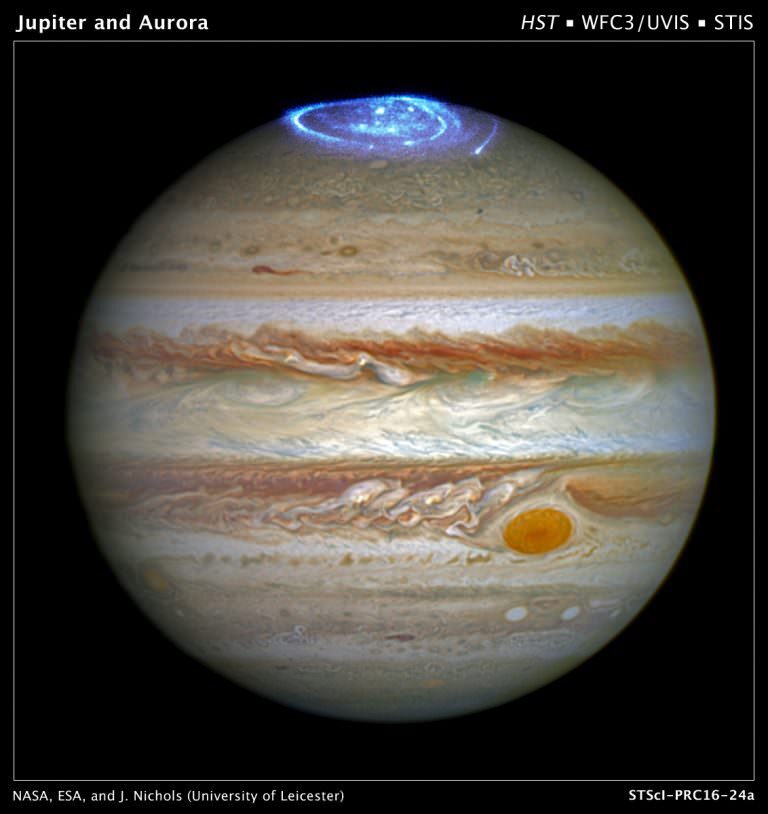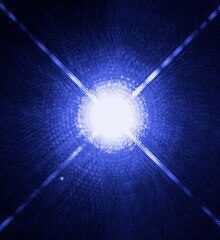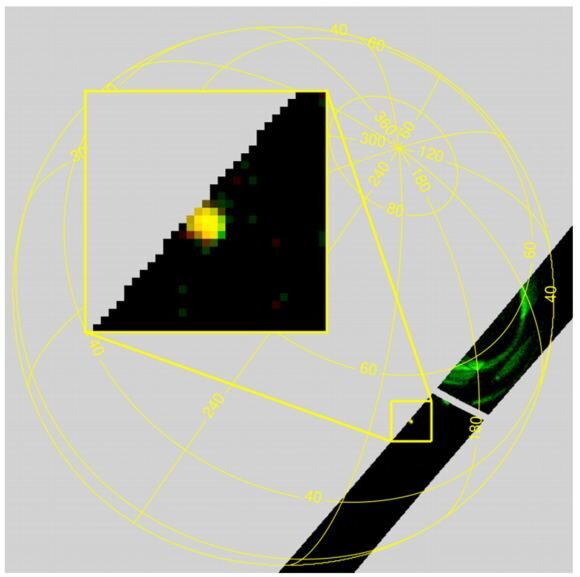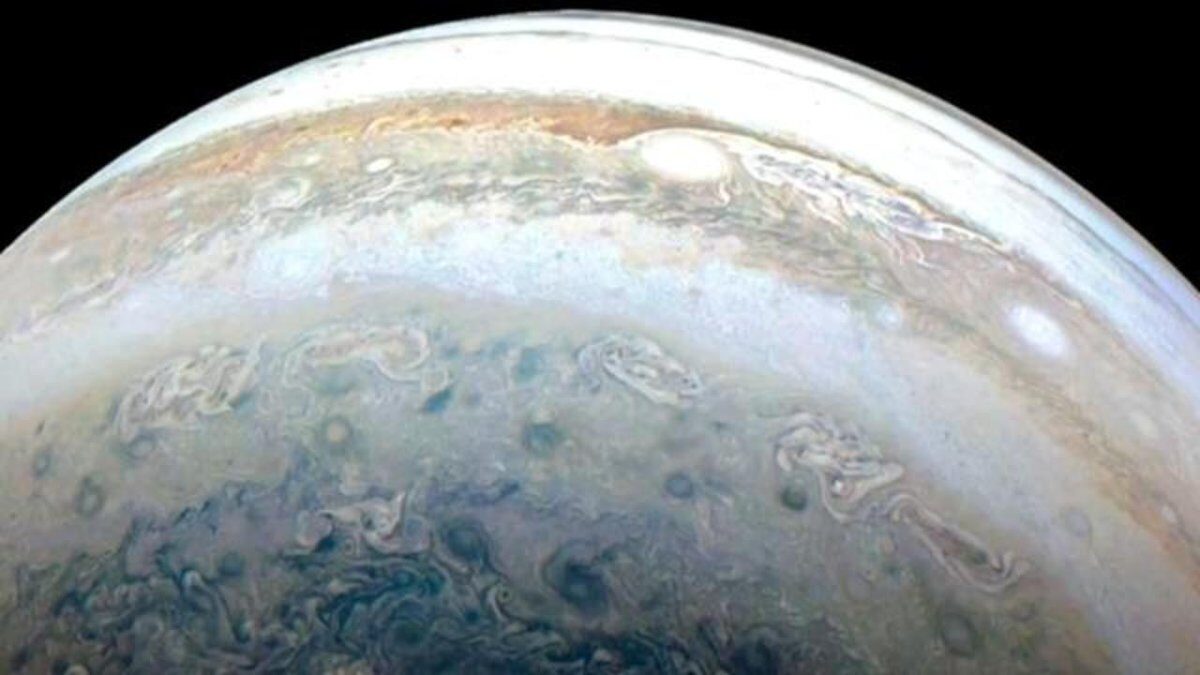The team collects data from the UVS, one of the instruments on Juno, NASA's mission tasked with studying the largest solar system planet up close. UVS is Juno's ultraviolet spectrograph, which collects data in the ultraviolet spectra from 68-210 nm. It's primary mission is to study Jupiter's atmosphere and watch for its breathtaking auroras.

The team's first thought was to eliminate other sources that could have caused the spike. First they eliminated the aurora they were searching for as part of their normal research. This area of the planet where the spike appeared on was outside the normal bounds of the auroras they studied.
Next they sought to understand whether it might have been a "transient luminous event" (TLE), which had popped up in their data previously. These TLEs, commonly known by the whimsical names of "elves" or "sprites", are thought to be instances of lightning in Jupiter's upper atmosphere. While they have been seen in the same general area of the event, TLEs are very similar to auroras in terms of their spectral profile, and none had ever been seen that was anywhere near the size or scale of the event UVS captured this time.

One advantage Juno has over previous observational efforts is that, due to its proximity, it is able to detect much smaller impactors. The scientists estimate that the object they observed weighed anywhere between 250 and 5,000 kg. They also estimate that there are approximately 24,000 impacts of a similar size on Jupiter each year.
Scott Manley's description of how Juno's camera works.
Credit: Scott Manley YouTube Channel
24,000 impacts seems like a lot when Juno has been in orbit for almost four and a half years and has only found one. However, in all that time in orbit, the observational time on each individual area of the planet is less than you might think. Orbital mechanics and spacecraft stabilization techniques have huge impacts on the amount of time that UVS is able to collect data.
Juno is in an elliptical orbit around Jupiter, and only passes the planet at its closest point (known as a "perijove") once every 53 days. During each perijove, the UVS is only able to take data for approximately 10 hours. Making things even more complicated, radiation wrecks havoc with the sensor, so if the spacecraft happens to be passing through a particularly high radiation area, it is unable to collect useful data.
But that's not all - Juno itself is actually rotating, which is a way of stabilizing the spacecraft's orbit. It rotates approximately once every thirty seconds, and since the UVS is placed on one side of the spacecraft, it is only able to collect data for about 7 seconds each spacecraft rotation, if Juno is at its closest approach point.
All this rotating, orbiting, and radiation navigating adds up to very little coverage over the 4 year mission. With this small slice of observational time, the spacecraft still managed to capture this spectacular image of a reentry. And with a simple bit of statistics, the team has calculated that there are likely thousands more to detect each year, if Juno or another spacecraft or telescope happens to be looking the right way.

No how many coincidental impacts it captures, the UVS will continue scanning for the aurora, and providing great data on that spectacular light show. If it happens to catch another impact as well, it will be another great instance of fortuitous timing playing a role in great science.




Comment: It's possible that, like on Earth, Jupiter is encountering many more spacerocks at the moment:
- HUGE meteor fireball lights up western China's dark morning skies
- Loud blast recorded on dashcam as meteorite explodes over Sarawak, Indonesia - Locals felt earth shake
- Updated Images: Jupiter Swallows an Asteroid - or a Comet?
See also: